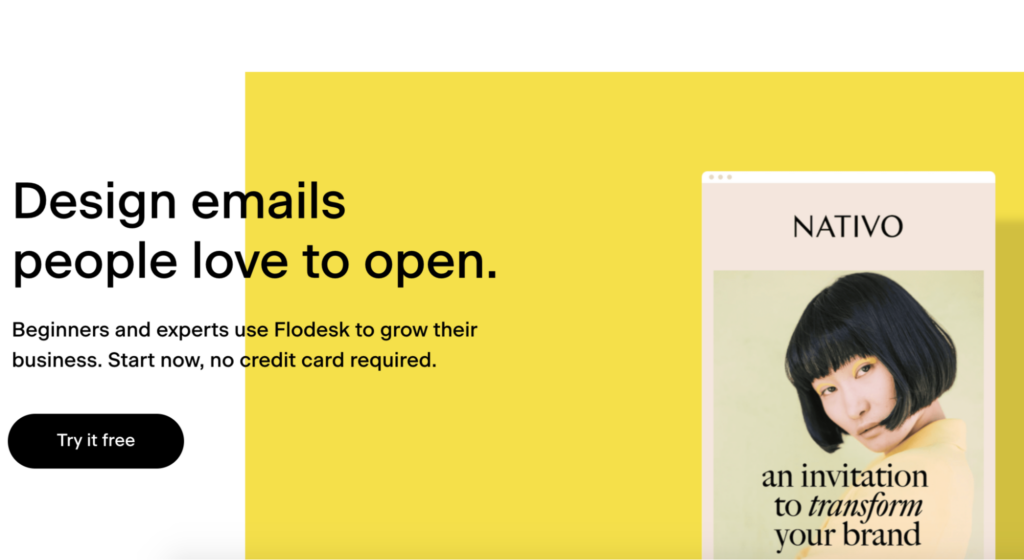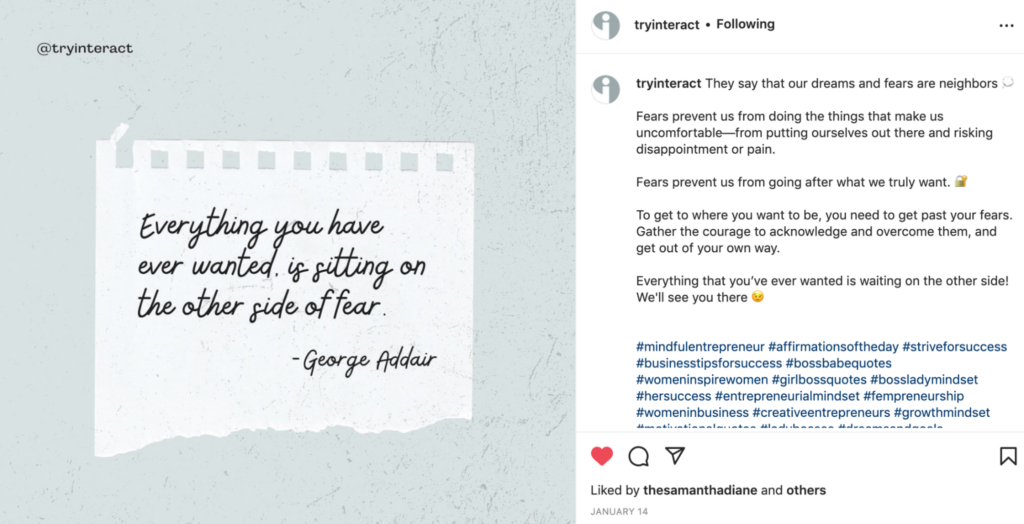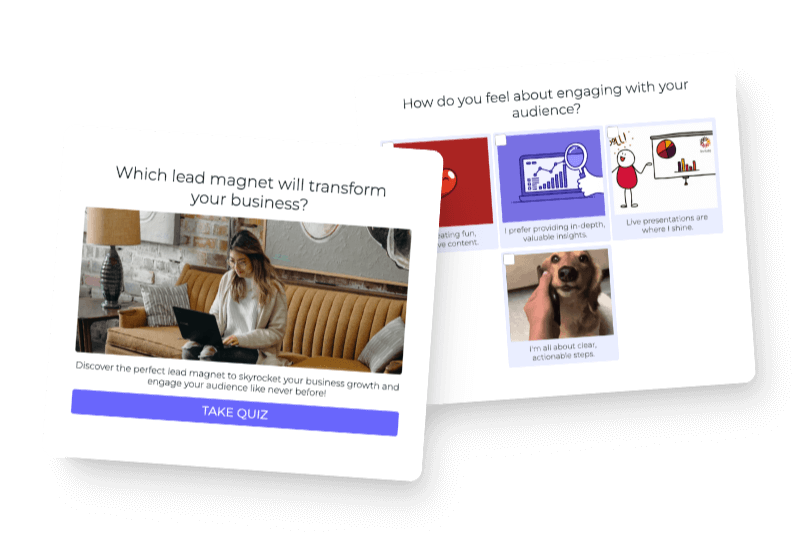Empathy is not something you can just pull from a data tool or hire someone to figure out. Empathy is built through practice, like a muscle you work out to get stronger. In this article, I’ll take you through the steps you should follow to build an empathy marketing model for your business, which will maximize your connection with customers, increase your ability to serve them, and attract new business.
First, let’s look at what the terms empathy marketing and empathy model mean.
Empathy Marketing: When brands understand and share the feelings of their customers in order to best serve them.
Empathy Model: A set of known feelings that your customers generally share and you have a deep understanding of, similar to an ideal customer profile but for your customers’ feelings.
Now let’s look at how you can create an empathy model and build it into your business.
Step 1: Creating an empathy model
Think of empathy like intuition, which is not a direct data point but a compilation of many inputs gathered over time.
Here are four ways you can begin building your empathy model.
Customer conversations
My personal favorite from the list. You’ll gain a wealth of knowledge simply from having conversations with your customers. I’m not talking about a scripted call with a set of questions that follow a template. I’m talking about being curious and trying to understand your customer.
The basis of empathy is curiosity because if we’re not curious about our customers, we can’t possibly understand and share their feelings. When you talk with your customers, make a concerted effort to stay present and curious, following trails of interest as they naturally arise.
When choosing customers to interview, select those you have a vested interest in learning more about. You’ll find that the conversations flow naturally.
Quizzes
Quizzes are empathy marketing on autopilot, with all sorts of built-in aspects of connection and conversation. They’re great for building empathy because you get a chance to directly ask people about their feelings, desires, wants, needs, dreams, and virtually anything else.
The people taking your quiz want you to know these things about them. They’ll actively give you data so that you can offer them a better experience. It’s a huge win-win on that front.
To make this concept really clear, I’ll share a story of how quizzes can bring empathy to life. It’s from Henry’s House of Coffee, a San Francisco coffee shop run by a third-generation Lebanese family who have been operating coffee houses for decades.
They built a quiz called The Coffee Finder that infuses all the knowledge from the grandfather of the operation. The quiz represents the conversations he’s been having with people in-person for years and years, when he’s discovering what kind of coffee best suits their lifestyle.

It’s beautiful and poetic; it’s just the kind of seeking-to-understand that personifies empathy marketing. If you like this idea and want to build your own quiz, that’s what Interact is all about. You can start for free here.
Surveys
When you survey your customers and get information about their likes and dislikes, sometimes it’s hard to hear negative feedback. But welcoming this information is the best way to empathize with how they feel.
Listen to what someone is saying, not how they are saying it. So, even if the person delivering feedback is angry or says something mean about you or your business, you can still learn from them.
For more helpful tips on synthesizing feedback, I recommend the book Thanks for the Feedback. It’s been a great assistant in helping me stay attuned, learn rather than react, and hear feedback about Interact.
Your customers’ work
A lesser-known way to get to know your customers is to pay attention to their work. People really care about their work. They have strong feelings about it. If you take the time to see what they do and read/listen/watch/engage with whatever they’ve created, you’ll get into their world and begin to understand what they need.
Plus, you’ll win massive points with your customers if you show up to a sales call already familiar with their work. Everyone likes to be seen and recognized, so there’s a double benefit.
Step 2: Deploying your empathy model across your marketing
Once you’ve gathered your empathy model, you can turn it into quantitative data. Keep track of all the inputs and then categorize your qualitative research into numbers.
Say, for example, you have twenty customer calls, one hundred quiz responses, and fifty survey responses. You can take all the information gleaned, categorize the feelings and emotions that people have shared with you, and build a model of what your customer looks like from an emotional perspective.
Once you’ve got that, you can weave it into your marketing strategies throughout your entire business.
Website
You can employ empathy marketing on your website by using examples that your customers will resonate with emotionally and images that align with their values. Present solutions to their problems that go beyond just surface-level.
Speaking directly to how your customers feel through your copy and meeting them where they are is a great way to build instant rapport and show your understanding. Flodesk, an email marketing company, does this well. Their headline “Design emails people love to open” speaks straight to the person who is tired of emails that don’t look good and therefore don’t get opened.

With an empathy model built out, you can speak effectively to your customers. They’ll instantly know that you get who they are and how they feel about their businesses and lives. If you can get on the same page with them, you’re no longer selling, but collaborating. That’s the pinnacle of marketing.
Content
When choosing content to produce, don’t limit yourself to your brand and what you offer. Broaden your content, covering the struggles and emotional highs and lows that your customers deal with, outside of problem-solving at work.
As we move into the next wave of work, people are much more aware and passionate about their mental and emotional wellbeing. As a result, meeting your customers in those places will become necessary.
Also, there is a big difference between generically written content that uses the same old redundant examples, and content written for a particular audience that uses relatable examples and stories based on your empathy model.
Product
While not everyone has access to influencing your product, there are a lot of wins that can come from taking your empathy model and applying it to your product. For example, if you know that time is an important issue for your customers, and they value their time over advanced functionalities, you can prioritize making the product easier to use rather than adding too many features.
Social Media
Social media is where showing empathy matters more than ever. Our marketing team does a great job of weaving empathy into social media marketing by adding quotes and pick-me-ups that address everyday struggles within our industry.
We work with many business owners who face a constant barrage of fear. Mental health among founders is constantly a hot topic. It’s never easy being the person who takes the brunt of everything.

So, at Interact, we share inspirational quotes that may just be the encouragement someone needs to get back to whatever task they need to get done that day. But, oppositely, if you don’t have an empathy model for your customers, these things can come across as generic.
Conclusion: Build an empathy model and deploy it
Building an empathy model consists of talking with customers, asking for data through quizzes and surveys, and engaging with the work your customers create. Once your empathy model is built (and it’s an ongoing process to be sure), you can deploy it in every part of your marketing and business. It will pay dividends for years to come.
I can’t recommend empathy marketing highly enough. It’s been a game-changer for Interact, and it is proving to be a differentiator for all types of businesses. To get started, all you have to do is have conversations with your customers and pay attention to what they do. Then use quizzes and surveys to learn more. When your model is built, your entire business will benefit.
